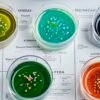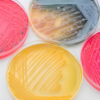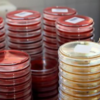
Sterile sampling bags serve as the first line of defense against microbial contamination during sample collection. In fields ranging from pharmaceutical manufacturing to food safety, compromised samples can invalidate research, delay production, and jeopardize consumer safety. These specialized barriers ensure collected specimens remain pristine from point-of-collection to laboratory analysis.
Core Scientific Advantages
- Barrier Integrity
- Multi-layer construction (PET/PE/EVOH) blocks oxygen transmission (<0.02 cc/m²/day) and microbial penetration
- 0.22µm equivalent protection against airborne contaminants
- Pre-Sterilized Assurance
- Gamma-irradiated bags (25-40 kGy) achieve SAL 10⁻⁶ sterility
- Eliminate autoclaving inconsistencies that cause 17% of traditional sampling failures
- Contamination Prevention Mechanisms
- Self-sealing adhesive strips maintain isolation after collection
- Integrated filters enable gas exchange without particulate entry
Industry-Specific Applications
| Sector | Critical Use Case |
|---|---|
| Pharmaceutical | Cleanroom environmental monitoring |
| Food Production | Raw material pathogen screening |
| Water Treatment | Legionella detection in cooling towers |
| Clinical Research | Stool sample preservation for microbiome studies |
Technical Validation Data
- Sterility Maintenance: 99.97% reduction in background flora vs. non-sterile containers
- Sample Viability: Pathogen recovery rates improve by 42% compared to conventional containers
- Temperature Stability: Withstand -80°C to 121°C without structural compromise
Regulatory Imperatives
- Compliance Requirements
- FDA CFR 211.113: Mandates sterile containers for aseptic processing
- ISO 14698: Requires validated sampling systems for cleanrooms
- USP <1116>: Standards for microbiological environmental monitoring
- Documentation Essentials
- Lot-controlled sterility certificates
- Material safety data sheets (MSDS)
- Extractables & leachables testing reports
Cost-Benefit Analysis
- False Economy Alert: Non-sterile bags increase costs through:
- Repeated sampling (23% average increase)
- Lab investigation time (5-15 hours/contamination incident)
- Production downtime (50K/hour in pharma)
- ROI Calculation: Sterile bags deliver 400% return through contamination prevention
Implementation Best Practices
- Selection Criteria
- Opt for bags with puncture-resistant bottoms (≥300g burst strength)
- Validate filter compatibility with anaerobic samples
- Field Protocol
- Always use secondary containment during transport
- Limit bag opening time to <15 seconds in contaminated environments
- Storage Optimization
- Maintain sealed in original packaging until use
- Avoid UV exposure to prevent polymer degradation
Innovations Redefining Safety
- Anti-Static Formulations: Prevent particulate adhesion in electronic cleanrooms
- Chromogenic Liners: Visual contamination indicators (color change at >1 CFU/cm²)
- Tamper-Evident Seals: Meet chain-of-custody requirements for forensic applications
Conclusion: Beyond Convenience, Toward Certainty
Sterile sampling bags transform contamination control from theoretical requirement to operational reality. By providing an impregnable barrier between samples and their environment, they deliver the foundational integrity required for accurate microbiological analysis. In an era where regulatory scrutiny intensifies and margin for error diminishes, these specialized tools transition from optional accessory to non-negotiable necessity. Their adoption represents not merely procedural compliance, but a fundamental commitment to scientific validity.
Recent Posts
- Breaking Down the Role of Culture Media in Pharmaceutical Research
- A Guide to Using Culture Media for Strict European Cosmetic Safety Compliance
- The Role of Culture Media in Ensuring Accurate Cosmetic Microbial Testing
- Transport Media and Their Role in Microbial Sample Transport
- How Culture Media Impact the Precision of Cosmetic Microbial Testing



